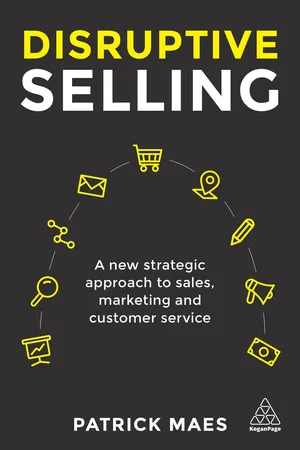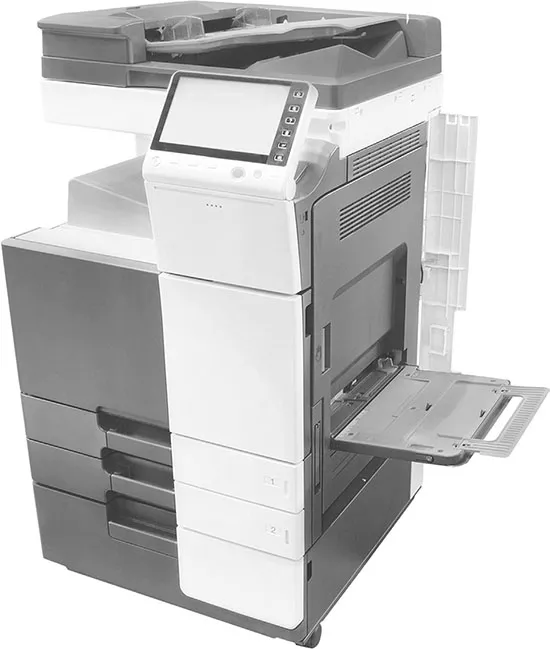The copier
A copy machine. Have you got one in your home? You know the kind of thing I mean. A large, all-in-one, multifunctional copier, which you can use to print, copy, scan, sort, bundle, fold, staple, perforate and fax (another relic of the past!) large volumes of paper. I’ve got one in my office. It has given me some troublesome moments in its time, but now it has provided me with the inspiration for this chapter.
Let me tell you a story. A few years ago, my then office manager concluded a contract with the supplier of the copier. Every office needs one, and our office was no different. The manager conducted a study beforehand, the main element of which was a comparison of prices: what would it cost and what exactly would this get us in terms of copier, paper, toner, etc.
The firm he finally chose was a specialist firm, active in Benelux and well known for its high-quality technical support. Amongst other things, the contract stipulated how much paper we should use monthly, either for printing or copying. Based on the number of staff in the office and the number of projects in the pipeline, we expected to use about ten thousand sheets of paper each month. This is the figure that was written into the contract. The supplier agreed to send along a maintenance technician at fixed intervals and to provide us with paper and ink cassettes in good time. So far, so good.
Figure 0.4 Our copier: a source of inspiration for this chapter
Our copier: a source of inspiration for this chapter In the world of contracts, the purchaser and the supplier are tied to each other. Once the contract has been signed, the conditions governing their relationship become permanent. The wording of the contract determines what goods or services will be provided and at what cost. And in a B2B context, it is not unusual for contracts of this kind to have a duration of five years. But what if circumstances change? What if your company repositions itself after a year of the contract? Or what if you want to introduce a paperless office for environmental reasons? After all, everyone knows that a degree of flexibility is important – and so is the environment!
This is precisely what happened with our company. I decided to push through a major reorganization, so that the paperless office and the New Way of Working could be introduced at CPI. But this meant that instead of 10,000 sheets a month, I now only needed 1,000 sheets maximum. But the copier continued to cost the same 600 euros each month. Yet I had no idea exactly how much I was paying for the different elements of the contract: the leasing of the machine, the use of toner, the use of paper, the maintenance, etc.
If I am not using so much toner, then the supplier doesn’t need to deliver it – or so I thought. Similarly, a machine that produces just 12,000 copies a year surely requires less maintenance than a machine churning out 120,000 copies. In the circumstances, it seemed reasonable to ask the supplier to amend my contract. I contacted them and said that I was happy to keep our now excessively large and over-dimensioned copier for the remainder of the leasing period. But I asked that the operating conditions and the monthly cost should be adjusted fairly to reflect the new situation.
Their response to this reasonable request was anything but reasonable. ‘Sorry, a contract is a contract. Just see how things develop over the next few months. If you decide at the end of that time that you still don’t want the machine, we’ll take it off your hands but will regard the remaining monthly payments as compensation for terminating the contract prematurely.’
After several long and not very successful conversations on the phone, I finally received a visit from one of the supplier’s sales reps. With a grin on his face, he told me that he had a solution that would save me a lot of money each month. Instead of leasing it for 600 euros a month, from now on we would only be asked to pay just 450 euros a month. This was at least something – but it still left us with a machine that was far too big for our needs and required us to pay over the odds for the minimal use we now had.
As a modern consumer, in the meantime I had done some investigating of my own on the internet. From the various online offers I had received, it was clear that the basic price for just leasing a copier (exclusive of use) was around 150 euros.
Even so, to save further wasted time and effort I decided to cut my losses and accept the offer the rep had made. Imagine my amazement when I read the new contract and discovered that its duration had been increased from 60 to 84 months! At the end of the day, I would end up paying the same total amount of money and would be forced to keep our over-dimensioned monster-copier for a further two years!
To say that I was not happy is an understatement. I was outraged. I vented my frustration on the sales rep, but he said that he had another bright idea that could help to solve our mutual problem: if I would promise to provide him with two or three new customers, he would ‘arrange things’ with his head office. This ‘proposition’ – made without the least degree of embarrassment – made me angrier than ever. I told the rep that I never wanted to see him in my company again and that I expected the copier to be removed as soon as possible.
Easier said than done, of course, and for the next few weeks I heard nothing further. Then one day I was called on my voicemail by a friendly sounding lady with a strong Dutch accent. She worked for the supplier company and would like to talk to me. She had been informed about our ‘problem’ and would like to suggest yet another solution. More in hope than expectation, I picked up the phone and dialled her number. It was an automatic answering system. ‘There are currently four calls prior to yours waiting to be dealt with. Please hold the line.’ And so I waited. And waited. And waited. After a time, I decided it might be best to try again later.
‘There are currently two calls prior to yours waiting to be dealt with. Please hold the line.’ Two beats four, and so I did as I was asked. After what seemed like an eternity, I finally got a real live person on the other end of the line. I explained my situation, how I had been called by someone from the company and was now phoning back.’ I’m sorry, sir,’ I was told politely, ‘ but I don’t know what you’re talking about. But if it’s important, I’m sure they’ll call you back. Goodbye – and have a nice day.’ And then she was gone!
Finally, the friendly sounding lady – her name was Barbara – did indeed phone me back and we eventually reached a mutually acceptable solution. I agreed to pay 235 euros a month until the end of the lease, and in return they offered a reasonable take-over price for the machine. But while we were negotiating, I still continued to get threatening mails from her colleagues elsewhere in the organization about the invoices on the original contract that I was refusing to pay.
I will spare you the details about the problems we had to actually get the new contract signed. A document with a series of miniscule boxes and equally miniscule text that needed to be filled in by the customer (me) and asked for all kinds of seemingly irrelevant personal information, almost down to my favourite colour and shoe size!
By now, you will probably have guessed that this company is not a model of disruptive selling.
It is not simply that they ignore the possible existence of well-informed and empowered customers. They also clearly lack a decent customer relationship management (CRM) system that tells them what has been agreed with customers, when, where and how. As for their sales strategies, these seem to be a throwback t...

